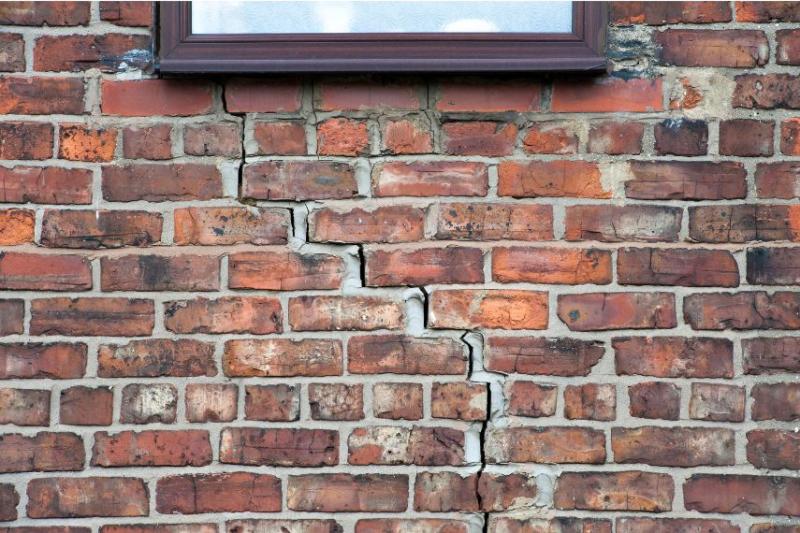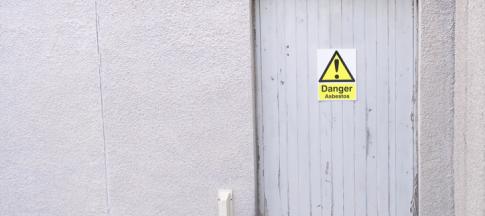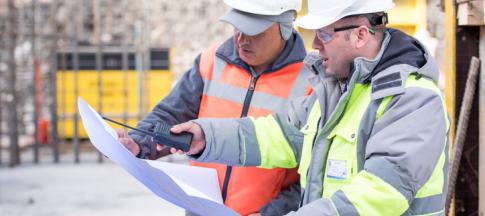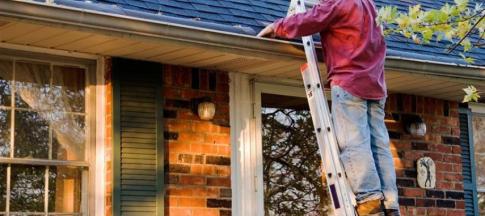
Subsidence is one of the most serious issues that can happen to your home, but many of us don't know what it is or what to look out for.
Below, we explain everything from what subsidence is and what causes it to the signs and whether your insurance covers you.
What is subsidence?
Subsidence is when the ground below your home sinks.
It puts your home at serious risk of damage as the foundations can become crooked, causing your walls and floors to move and become unbalanced.
Subsidence is often mistaken with the following:
- Heave – the ground under your home shifts upwards because of the soil expanding
- Landslip or landslide – the ground under your home moves down a slope or is washed away
- Settlement – the downward movement of a property caused by the building’s weight
What’s the difference between settlement or subsidence?
Subsidence is when the soil beneath your home moves away from the structure, making it move.
Settlement is where the structure moves the soil, because of its weight.
Settlement usually happens early on after a property has been built, but subsidence can happen at any time.
What causes subsidence?
Subsidence can be caused by a few different issues.
Weather
Subsidence can happen when the ground below your house shrinks or swells due to the weather.
Leaky drains
If you have leaky drains, they can wash away the soil under your home or make the ground so saturated that the foundations give way.
Roots
If trees are planted too close to your home, they can grow longer as they search for moisture and go under your home. This can cause the foundations and structure of your home to subside.
Mining areas
If you live in an area that’s been mined in the past, this could lead to unstable foundations or even structural damage to your home.
Clay soil shrinkage
Homes built on clay soil are more likely to suffer from subsidence than those built on other types of soil.
This is because clay soil is more likely to either shrink or swell when there’s changes in moisture – whether that’s from extreme weather, leaky drains, or something else.
How to spot signs of subsidence
Firstly, check for distinctive cracked walls.
Cracks from subsidence can:
- appear and spread rapidly compared to regular cracks
- happen both inside and outside the property
- look narrower at one end than the other and run diagonally across the wall
- be found around doors and windows
Other signs include:
- doors and windows unable to open or close because they’re misaligned
- wallpaper crinkling at the wall/ceiling joins (this may be behind any coving)
- cracks where any extension joins the property
How do I reduce the risk of subsidence?
Avoid planting trees or shrubs within six metres of your home.
For mature trees or shrubs, make sure they’re carefully managed and regularly pruned. For larger trees you could ask a tree surgeon how best to manage them.
The Association of British Insurers (ABI) also provide information on safe distances to plant different types of trees.
Read our guide on tree damage and home insurance, which includes a section on subsidence caused by trees.
Also regularly check for unfamiliar cracks and keep your guttering and drains unblocked.
I think my home is subsiding, what can I do?
If you think your home is subsiding and your home insurance covers subsidence, call your insurer. They'll be able to advise you on what you need to do next.
There are a few possibilities of what might happen next, depending on how big the issue is:
- You might only need a surveyor to monitor your home for a period, rather than all the time. If the damage is more obvious, you might need to investigate the foundations and take soil samples.
- Minor cracked walls which don't affect the structural integrity of your home can often just be filled in and painted over.
- Serious cracks that impact the structure may need to be re-pointed and repaired with metal fixings.
- Your home may need to be underpinned, which is when an additional solid foundation is laid below ground level to add strength.
- In some rare cases where the cracks are deemed severe, major reconstruction and some rebuilding may need to take place.
The cost for fixing subsidence can vary as it depends on the extent of the issue and how you choose to resolve it.
Does home insurance cover subsidence?
This depends on your insurer.
You have to declare whether your home is already subsiding or has previously to avoid your claim being rejected.
Loss or damage caused by subsidence is covered under our Buildings and Contents Insurance, but with some exclusions. Check your policy book for full details.
No matter what type of policy you have, you aren’t covered for subsidence if it’s due to:
- settlement, shrinkage or expansion
- coastal or river erosion
- demolition or structural changes or repairs to your home
Find out more about what our home insurance does and doesn’t cover.


